A basic element in a modern woman’s wardrobe is a top. The patterns of this interesting from a fashion point of view item allow you to sew it yourself - with your own hands. The top is worn in the summer with straps or draped, as an independent part of the image or as a bottom layer when using jackets, bombers, cardigans.
The simplest models, made from different materials, can become the basis for creating multi-layered looks in an office or urban style.
Necessary tools and materials
A top with straps (the pattern is given below in the article) can be sewn independently, having a minimum set of tools and without sewing skills. For beginners, it is recommended to choose fabrics that are easy to work with - these are all variations of cotton, blended fabrics with linen and viscose. Silk and acetate fabrics, as well as knitwear, are considered more difficult for beginners.
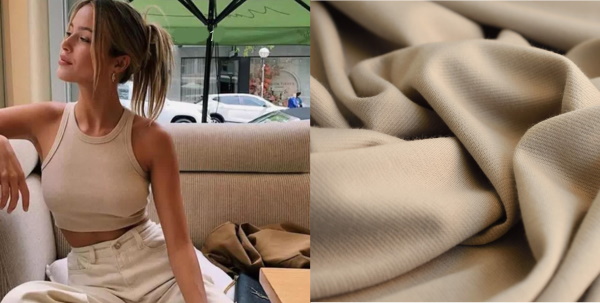
To get a high-quality, durable item, you need to have a sewing machine (you can baste the top by hand, but only a sewing gadget will ensure the strength of the seams).
A set of tools necessary for sewing a top:
| Name | Description |
| Scissors | To cut the material, you will need large, sharp scissors (craftsmen use special tailor's scissors, which are purchased in specialized stores and are not cheap). At home, you can choose large office scissors with sharp blades. |
| Chalk | chalk for cutting is a classic way of transferring a pattern onto fabric; today, craftsmen use special fabric drawing markers that dissolve and disappear after washing (for cutting dark fabrics, you can use an old grandmother's method - a piece of soap). |
| Threads | In addition to selecting threads by color, there are requirements for thread thickness for sewing different types of fabric (more details will be described below in the article). |
| Needle | This tool is used for preliminary basting of parts of the product (for preliminary fitting and adjustment of the pattern if necessary). |
| Pins | This type of needle serves as an auxiliary tool when adjusting the product to the figure, for example, pins are used to adjust the length of straps or the width of a top during a fitting, directly on the figure). |
| Sewing machine | a hand-held, foot-operated, electric or portable sewing machine that can sew straight and zigzag stitches for overlocking a free edge. |
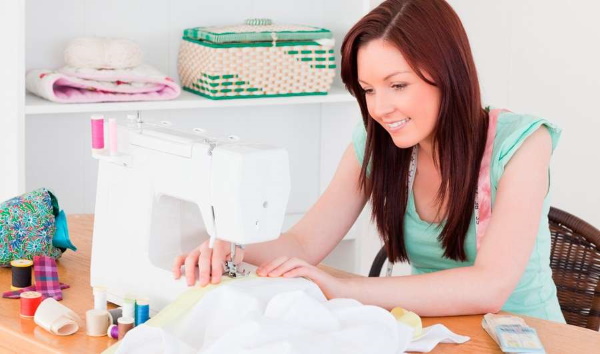
The top with straps (the pattern in different versions is given below in the article) can be sewn from different materials. The threads needed for a certain type of fabric can be selected from the table below.
How to choose cotton threads for each fabric:
| Fabric type | Thread number |
| Tulle, chiffon, silk | 70, 80 |
| Dense fabric (linen, suiting blended fabrics) | 50, 60, 70 |
| Satin, artificial mixed fabrics | 40, 50, 60 |
| Denim, corduroy | 30,40 |
| Genuine and artificial leather | 20,30,40 |
The quality and correct selection of thread thickness allows you to create a beautiful and wear-resistant seam. It not only improves the appearance of the product, but also ensures its durability when washing and wearing.
The materials you may need may include tape (if you are using it as straps), thin adhesive interlining, a 1 m long piece of fabric. For decoration, you can buy lace, sequins, beads.
Schemes with description
When sewing, it is worth remembering the preliminary stage of work - decatizing. This is the process of processing the fabric before cutting with steam and water. Cotton, linen and denim fabrics require mandatory processing. They must be soaked in warm water and allowed to dry in the air (repeat the procedure 2 times, since these materials have a step shrinkage).
Silk and satin fabrics can be steamed without pre-soaking. Before cutting, the cut should be carefully ironed. A top with straps (the pattern of the product in different variations is given below in the article) can look different depending on the style and the chosen fabric.
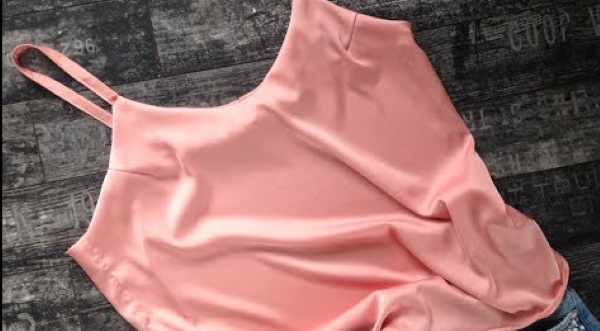
Strappy top options:
- with narrow straps in a lingerie style;
- with wide straps;
- with straps and ties;
- with one-piece straps;
- with draping in front;
- with open back;
- fitted;
- loose fit;
- short (crop top);

Crop top. Short crop top pattern. - long, for tucking into clothing;
- tank top with peplum.
With narrow straps in a lingerie style
Lingerie-style tops and dresses are popular this season. They are simple and concise in cut and highlight the figure's advantages. The choice of fabric, usually light and flowing, adds elegance to such items. It can be silk, satin, or knitwear.
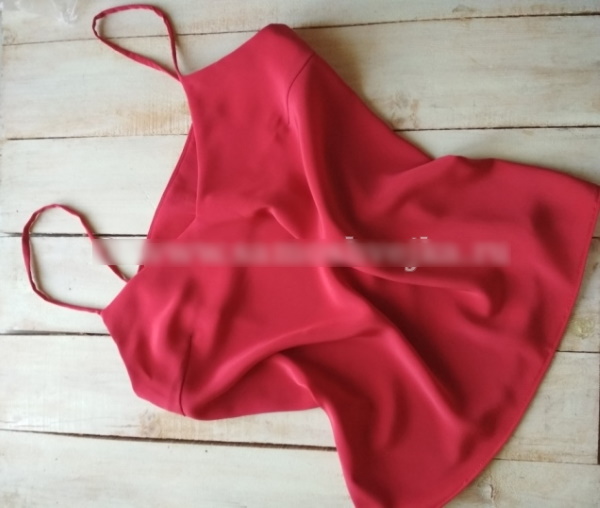
However, for the summer, they choose models made of mixed fabrics with cotton and linen, which are easier to work with and also look good in these models:
- After selecting the fabric, it is necessary to carry out decatization (the process is described above in the article).
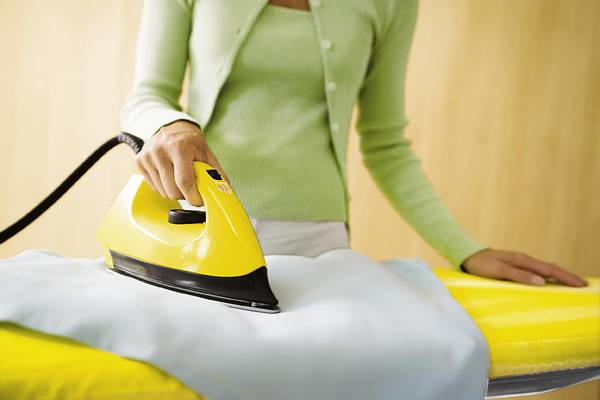
- It is necessary to fold the fabric along the grain line with a bend in the middle (the grain line runs parallel to the edge of the fabric).
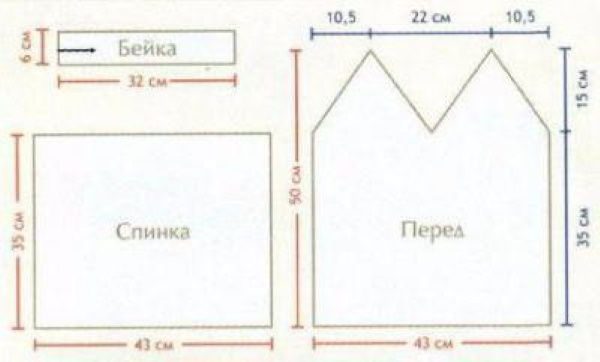
- It is necessary to pin the pattern parts to the fabric. The front part needs to be attached to the fold of the fabric to get an even canvas, and the back is made with a seam in the middle. To do this, pin the pattern to the fabric with sewing pins and trace the outline with chalk or a marker.
- The details to be cut out should include: a front part with a fold, a back part with a seam, 2 straps, a facing of the upper part of the front and back. According to the paper patterns of the facing, it is necessary to cut out the same elements from the adhesive interlining.
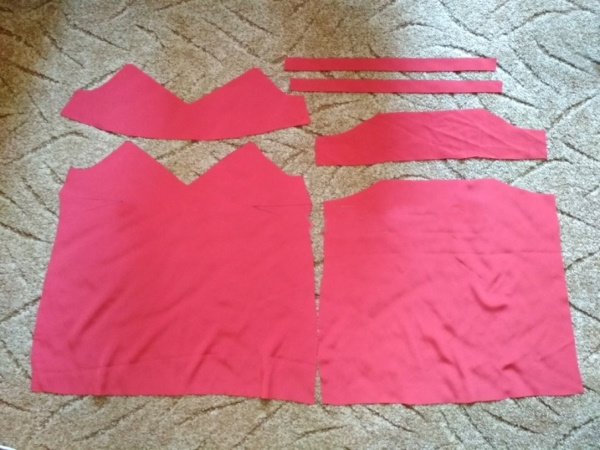
- It is necessary to set aside 1 cm for seam allowance along the contour of all pattern parts and cut out the pieces from the fabric.
- You need to prepare the straps (according to the style of the top, they are narrow strips of fabric). To do this, fold the 2 strap pattern pieces in half along the entire length and stitch, leaving a 1 cm seam allowance from the edge.

- Then you need to trim the allowance, leaving 1-2 mm of fabric to make it easier to turn the straps to the front side.
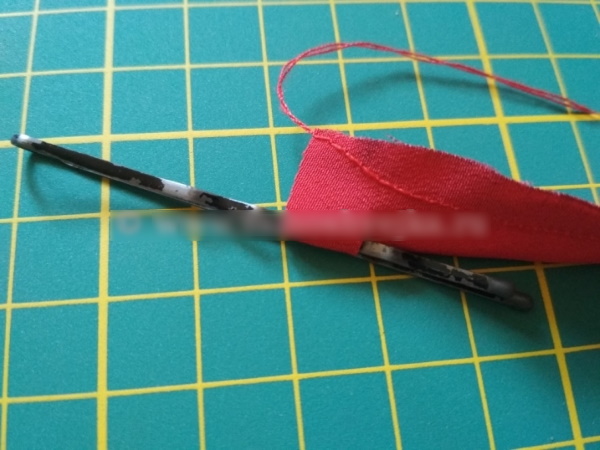
- The quick turn-out option using a thick needle is described below in the article. Iron the turned-out straps.
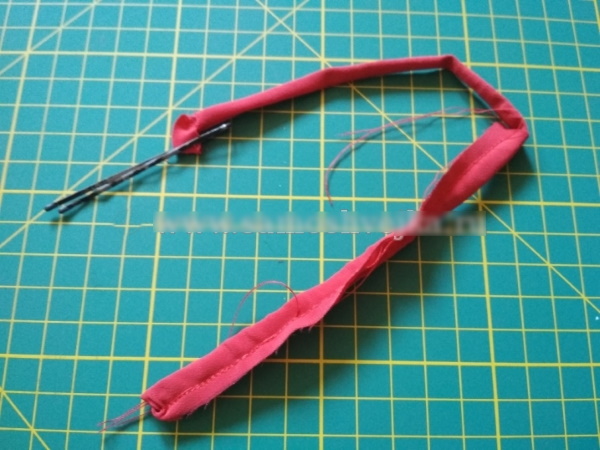
- You need to remove the paper parts from the fabric. Fold the back parts face to face and stitch along the 1 cm allowance. Then process the edges of the seam with an overlock, joining the 2 parts together. The seam needs to be ironed to one side.
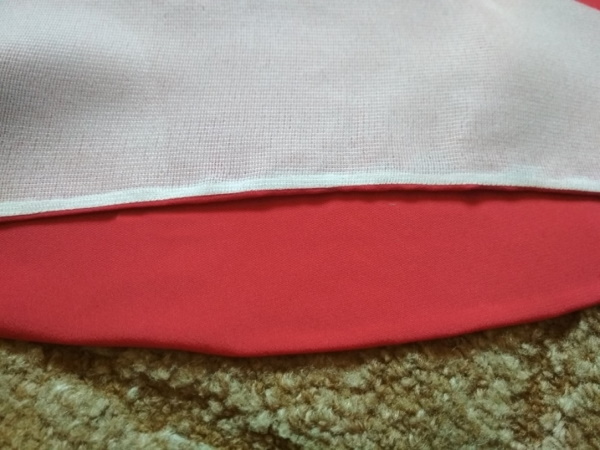
- The front of the garment may have darts that need to be stitched along the markings and ironed down.
- It is necessary to strengthen the facing parts with adhesive interlining. To do this, apply the interlining with the adhesive side to the back side of the part and iron it with a hot iron with steam.
- The front and back pieces need to be folded face to face with the facing pieces and stitched along the seam line, leaving a 1 cm allowance. Since the neckline of the lingerie-style top has a relief front part at the top, it is reinforced with an adhesive facing to keep its shape. Before work, it is necessary to secure the straps in the seams between the back and the facing (you can secure them with pins, which are removed when stitching).
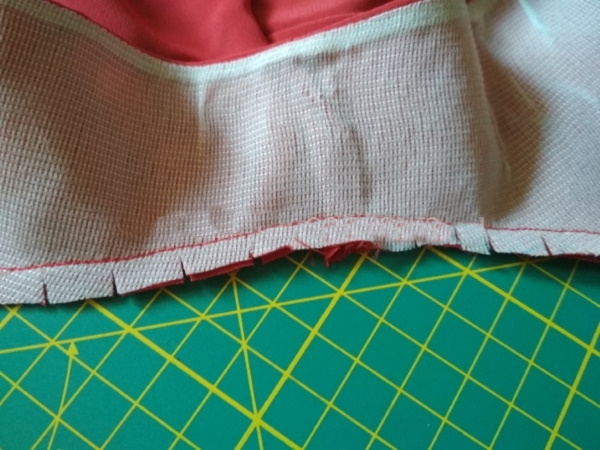
- After sewing the parts, you need to trim the seam allowances to 2-3 mm. Turn the sewn parts inside out and iron them. You should get 2 fragments: the front and the back, reinforced with a facing.
- The back and front pieces need to be folded face to face and stitched with a needle and thread using a “needle forward” stitch along the side seams. This is necessary for subsequent fitting and the ability to adjust the width of the product.
- Try on the product and adjust the width, length of the straps and the length of the product.
- If everything is OK, then the side seams can be stitched on a sewing machine, processed with an overlock and ironed towards the back.
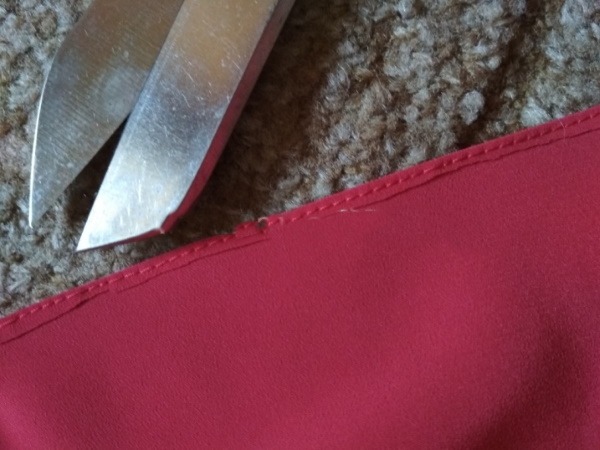
- The bottom of the product must be processed with an overlock and, turning inside out 0.5 - 0.7 cm, stitch with a straight stitch along the perimeter. Iron the processed bottom of the product.
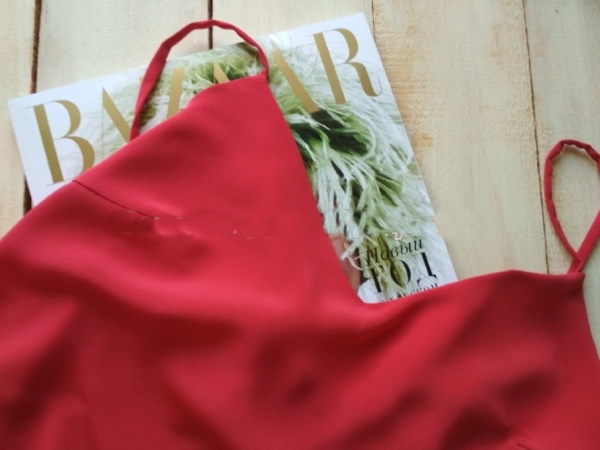
At the end of the work, you need to remove the basting from the side seams.
On one-piece straps without overlock
You can sew a top with one-piece wide straps. There is a way to process seams without using an overlock. In order for the straps and neck of the product to hold their shape, it is necessary to cut out the facing and reinforce it with interlining. Therefore, before work there should be back and front details, as well as facings.
Instructions:
- It is necessary to treat the facing parts with adhesive interlining. To do this, apply the interlining with the adhesive side to the back of the facings and iron with steam.
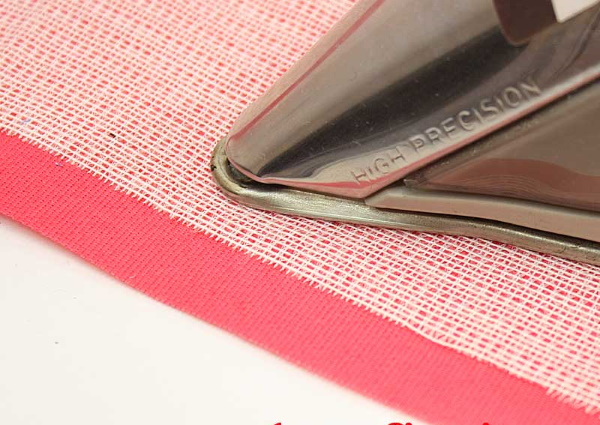
- The edge of the front and back facings must be processed with a Moscow seam. This type of seam will also be used to process the edge of the top. To do this, you need to fold the edge of the fabric by 1-2 mm and stitch with a straight stitch. Then iron and fold again by 1-2 mm and lay a second seam, over the first seam. You get a narrow hem along the edge of the product.
- You need to fold the top front and the front facing face to face and stitch along the edge of the pieces at a distance of 1 cm and trim the seam allowances to 2 mm. Turn the pieces inside out and iron the seams inward.
- It is necessary to fold the back and back facing parts face to face and stitch along the edge, stepping back 1 cm. Then you need to trim the allowance to 2 mm. Turn the facing inside out and iron.
- In this work, a linen seam will be used to process the side and shoulder cuts (in sewing textbooks, it is called a seam with closed cuts). To do this, you need to fold the back and front pieces with the wrong side facing each other and stitch at a distance of 0.7 cm along the side and shoulder cuts.
- The product must be turned inside out and stitched, stepping back from the edge by 1 cm. Thus, it turns out that the open seam edges are inside. The product must again be turned to the front side and ironed along the seams.
- Only the bottom of the product remains open and must be finished with a Moscow seam.
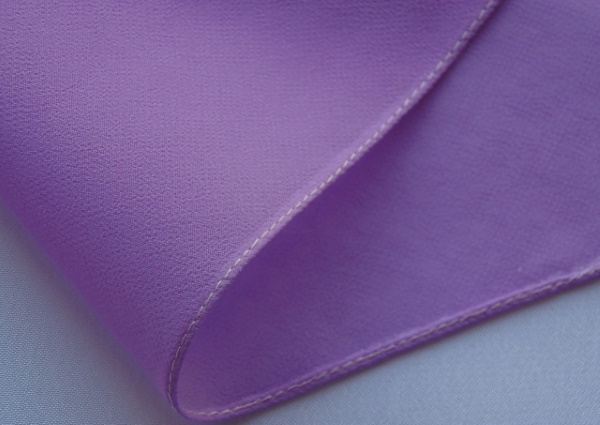
Thus, when sewing a top, all free edges are processed with a Moscow seam (a seam with a double hem), and the shoulder and side seams are made with a lingerie seam with closed edges.
Made from drapery jersey
A top with thin straps and drapery looks very elegant and sophisticated. This type of horizontal drapery is called "swing". It is made of soft, flowing fabrics - silk, knitwear, satin, chiffon.
Before work, there should be patterns of the product fragments: the back, the front with a fold and a one-piece facing (in case of drapery in front, since the "swing" drapery can also be done on the back), strap details, and a back facing detail. For this style, thin straps are chosen.
Sewing:
- The peculiarity of the cut is the arrangement of the pattern pieces along the bias thread of the fabric, in this case the drapery will form soft waves. To do this, the fabric is folded diagonally. The diagonal fold of the fabric is the center line of the front and back.
- It is necessary to pin the pattern to the fabric diagonally. The straps and facing are cut out along the grain from the remaining part of the cut.
- You need to fully prepare the straps: stitch along the entire length, trim the seam allowances and turn the straps inside out. The finished elements need to be ironed with a steam iron.
- To make the product soft and flowing, it is recommended to reinforce only the top of the back with interlining. To do this, apply the interlining with the adhesive side to the back side of the back facing and iron with steam. The bottom of the facing together with the interlining must be processed with a zigzag stitch. In this case, before fixing the facing on the sewing machine, you need to pin the straps to the seam (they are located at a distance of 7 cm from the center line of the back).
- When working with the front part of the top, you need to fold the facing face to face with the shelf and lay lines along the armhole of the product. Process the bottom of the facing with a "Moscow seam" (the technique for doing it is described above in the article). At the same time, before work, you need to fasten the straps at the top of the armhole and fix them with a pin, so that later you can lay a line along the armhole together with the fixed strap.
- You need to fold the front part of the top with the back face to face and stitch along the side cuts, stepping back from the edge by 1 cm. Then trim the allowance to 0.5 cm and process with a knitted seam.
- The bottom of the product is processed with a double hem and a straight stitch. To do this, you must first baste the hem by hand, iron it, and then lay a machine stitch.

This lingerie-style top, made of pastel or nude fabric, is considered a basic item. It is used in a business wardrobe, combined with fitted jackets.
With tie straps
This style of top is used as an independent unit in the summer wardrobe. It is made of light, natural fabrics. Blended compositions of linen, viscose and cotton with the addition of synthetic thread are best suited. Before work, it is necessary to have paper patterns with one-piece wide straps, front and back facings with a one-piece part of the strap.

Before work, it is necessary to decapitate the fabric (the procedure is described above in the article):
- The patterns must be placed along the grain of the fabric, for this the piece must be folded widthwise with the edges facing each other so that the front and back pieces are folded. Pin the pattern to the fabric.
- It is necessary to trace the pattern elements along the contour and cut them out, leaving a seam allowance of 1 cm. The front part of the top may have a dart, which also needs to be transferred to the fabric.
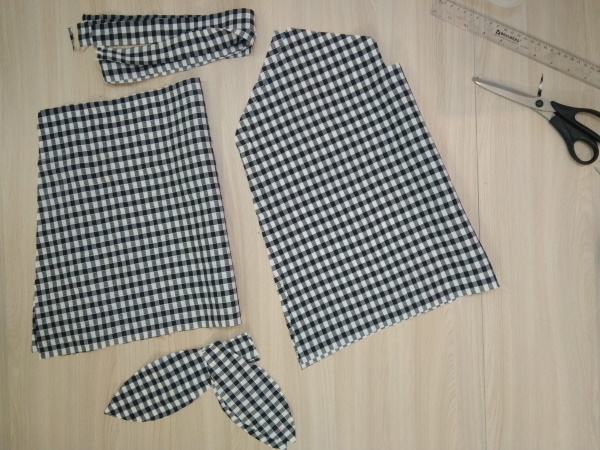
- On the front of the top, you need to stitch the darts, bringing the seam to nothing. They need to be ironed down.
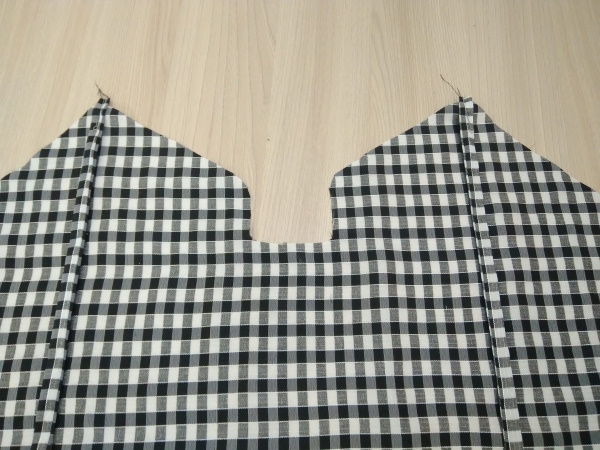
- The front facing with one-piece straps must be applied to the shelf face to face. The bottom of the facing must first be processed with a zigzag stitch. Then lay a straight line along all the cuts, connecting the facing with the front. At the same time, one-piece straps are made along the length of which a line is also laid.

- Place the back facing (the bottom of which is also pre-treated with a zigzag stitch) on the back face to face, and sew a straight line along the cuts, stepping back 1 cm from the edge.
- The front and back pieces are turned inside out along with the straps and ironed.
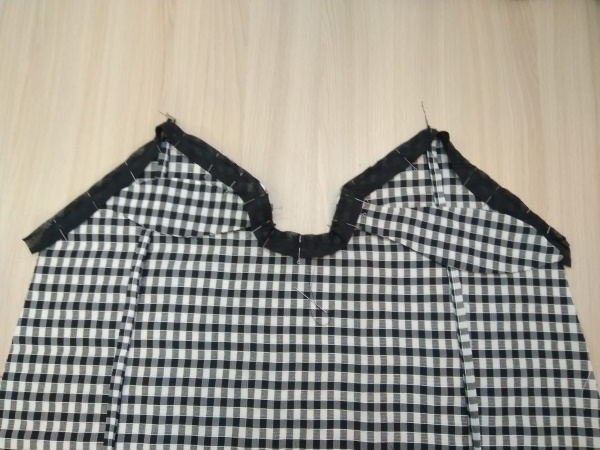
- At this stage, you need to manually baste the side seams of the front and back. Then try on the product. If the result is satisfactory, you need to machine a straight line along the side seams of the top and process the edges with an overlock or a zigzag stitch.
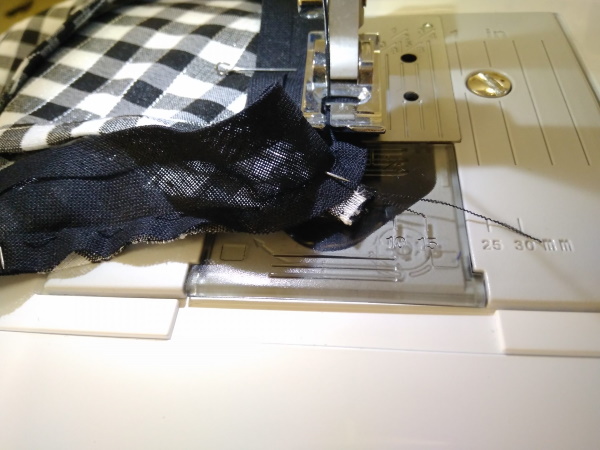
- The bottom of the product needs to be processed. This can be done with a double hem or a Moscow seam. After the bottom of the product has been processed, it needs to be ironed with a steam iron.

This style of top is versatile, as you can adjust the length of the straps. However, it will be inconvenient to use in multi-layered looks, the ties will give unnecessary thickness in the area of the shoulder seams. Therefore, this style is chosen exclusively for a summer wardrobe in combination with white wide trousers, jeans or shorts.
As a stand-alone piece of clothing, a tank top is not suitable for all women. The pattern of the top must take into account the size of the chest. Women with large chests and full shoulders are recommended to wear tops as a first layer, covering them with a jacket, cardigan or blouse.
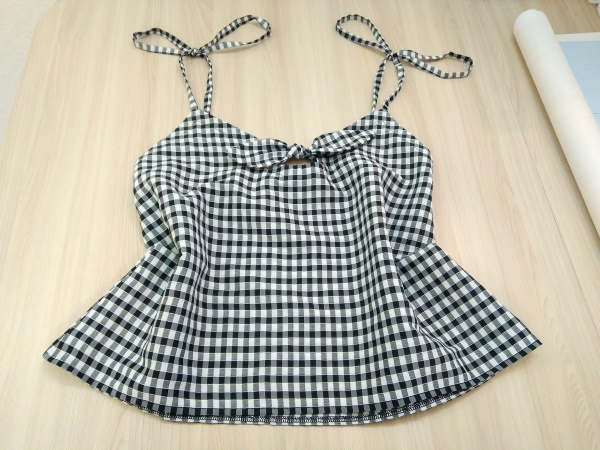
For a summer wardrobe, tops are a necessary addition to linen jackets or silk cardigans. When putting together an office wardrobe, you will need to select several tops with wide or one-piece straps in pastel colors (they go well with dark and gray business suits).
How to quickly turn straps inside out using a thick needle
Thin straps that add elegance to the garment are difficult to achieve a perfect appearance with closed seam edges. Wider straps can be easily turned inside out with a pencil, but thin elements are problematic.
Next:
- It is necessary to stitch the straps along the entire length, stepping back 1 cm from the edge.
- The seam allowance must be trimmed, leaving 2-3 mm.
- You need to take a thick needle and thread it with strong thread twice as thick.
- Secure the thread at the edge of the strap with a few stitches, then insert the needle inside and, moving it inside the strap, turn it right side out.
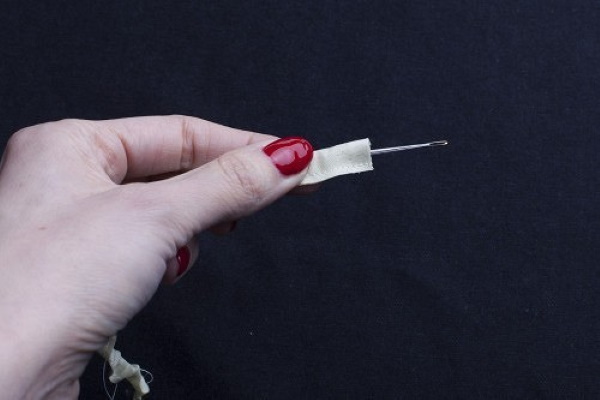
- Cut off the thread fastening at the edge of the product and iron the strap with steam.
Secrets for Beginners
The top with straps (the pattern is not difficult even for beginner seamstresses) can be basted with any thread, and for machine stitching it is necessary to choose the right thread thickness.
Secrets from experienced craftswomen:
- when choosing a thread that is too thick for sewing (in the hope of getting a stronger seam), you get a tight, unsightly seam that wrinkles thin fabrics;
- thin threads during sewing lead to seam breakage during wear and skipped stitches during sewing;
- choosing the right needle for your sewing machine ensures the quality of your seams (a needle that is too thick will tear the fabric while sewing, and a needle that is too thin will cause snags and may break during the sewing process when joining thick, durable fabrics);
- the quality of the seam is affected by the tension of the upper and lower threads (they must be the same, otherwise the more taut thread will pull the other to its side);
- You need to make sure that the numbers of the upper and lower threads in the machine match.
A top with straps can “sound” differently in a woman’s wardrobe. The patterns of the options given above in the article allow you to create a capsule of a basic look for all occasions using 3-4 models from different fabrics. The advantage of this detail of the look is that you can sew it yourself or even remake it from an old blouse or dress, giving a new sound to a boring thing.
Video about the pattern of a top with straps
Top with straps without overlock:
